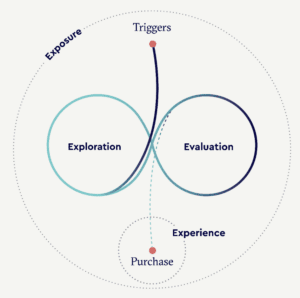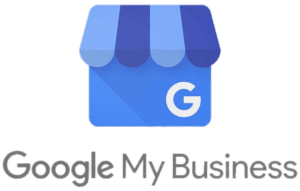
How SEO helps conversion rate and profit

We all know that SEO helps boost those all-important rankings in the SERPs, but how does it help your online commerce, conversion rates and profits?
At the core of any business is profit, and at first, it can be hard to pinpoint exactly how SEO takes you there, but trust us, it certainly does. Driving conversions is one of the core benefits of your business implementing an SEO strategy, helping to maximise website visibility and your chances of gaining revenue.
Conversion can be indicative of the success of a search engine campaign and is an easy metric to measure that can be presented to clients. It provides hard, solid evidence that proves the magic of SEO.
There are endless ways in which SEO can help conversion rates and profit skyrocket for businesses
Increased Website Visibility
SEO gets your page out there, which is the first step to getting users to recognise your products or services. Visibility is key, if your site can’t be noticed, how can you gain conversions or profit?
An increased visibility results in more organic traffic. SEO practices can involve link building and creating an internal linking structure, resulting in the flow of organic traffic to all of your pages. This improves website visibility as Google recognises the authority of your page and you’re likely to rank for more keywords by using SEO to optimise content.
‘The Messy Middle’
SEO can help you untangle what is known as ‘the messy middle’. This refers to part of the user’s buying journey, bouncing between pages and sites undecided on whether to purchase a product or invest in a service.

Services like e-commerce SEO can help as it considers all the factors that come into play when a user is deliberating- this can include delivery, demand and competitors. Implementing SEO therefore helps profit as it drives more users towards that all-important ‘buy’ button and optimises for the experience of a modern-day shopper.
Amy Leach, Organic Lead here at Embryo, adds:

Amy Leach
Organic Lead
Improves User Experience
An improved user experience when browsing creates trust and familiarity when on your site. If your site has caused limited frustrations and created a smooth experience, they’re more likely to engage with your services and products.
User experience can either make or break a site. After all, we rely on users to drive conversions and to make that final purchase. First impressions are everything. If your site doesn’t impress, why should a user invest?
SEO helps to get your site there. By crafting an accessible site that’s fast-loading on mobile and desktop, full of relevant content and a navigational structure, SEO ensures best practices are implemented to reach the desired user experience.
Local SEO for local businesses
Implementing local SEO practices for sites that rely on local customers can significantly increase conversion rates. Your SEO strategy is targeting your target audience, so optimising content for local searches is key.
If your services and products reach the local audience, you should think to optimise contact details to increase the chances of engagement. Optimise for keywords that relate to the local area, for example you’d try and rank for ‘Digital Marketing Services Manchester’ instead of just ‘Digital Marketing Agency’.
Location-specific information can be found if you use Google My Business– it allows you to change how your business appears on Google search, maps and shopping if it’s an e-commerce site.

Amy continues:
“Local businesses should be using Google Business Profile. You want to not only appear in local search results, but also on Google Maps. I think people overlook maps even though lots of users tend to search directly on there for anything local to them. Another local SEO strategy for local businesses is link building- there’s a lot of local, small websites where you can quite easily obtain those backlinks, and they’re highly relevant”.
How to measure conversion rate and profits
Measuring conversion rate can vary from site to site. It can depend on whether you’re looking to sell products or services, or both. In some cases, it’s measured through clicks, and in others it’s measured by revenue and profit.
Cost per acquisition helps determine how much you’re spending to try and gain a customer. This allows you to determine your profit and whether how much you spend on SEO efforts is paying off, or whether you need to invest more funds into SEO services.
It may be that you want to measure the click-through rate to determine how many users have explored further and performed the desired action. Or, the bounce rate can tell you how many users leave your site without taking further action.
These are the metrics that are not measured by money, but your return on investment (ROI) can show the value of your SEO practices in comparison to how much they cost. This is helpful for cooperating with your SEO agency when creating a strategy and budget.
At Embryo, our SEO strategies created by a team of experts ensure that practices maximise conversions and profit. We use a fine-tooth comb to tailor your strategy to you, optimising every element of your site that is in need. Take a look at our case studies to see just how successful our strategies have been.
Want to know more about our SEO services? Feel free to get in touch today!
FAQs
Answered by our SEO team
Can a business survive without SEO?
Definitely, it entirely depends on your business model. Some businesses enter the market through Organic growth, others opt for Paid Media advertising to drive new business. SEO is a longer-term investment, but can generate highly valuable leads for your business, even if it isn’t essential.
What is the biggest factor in customer conversion?
At Embryo, we focus on what’s called the “messy middle”, which is a stage during your buying cycle where you’re heavily considering whether or not to convert. We believe that if you can captivate this audience with the right content, you can encourage advocacy that then leads to a customer conversion.
Is SEO or PPC more effective for conversion?
In general, PPC will be more effective at driving website conversions due to the highly targeted commercial nature of their advertising, but this can sometimes require a significant budget investment. SEO on the other hand takes longer to drive traffic & subsequent leads, but with a significantly smaller budget.
Can I use the conversion rate even if my business isn’t in e-commerce?
Absolutely. Conversion rate isn’t just for e-commerce purchases and can be applied to any action you want your customer to take. For example, if you’re a Lead Generation business, you might want to monitor the conversion rate for customers filling out a form submission or signing up to a newsletter.